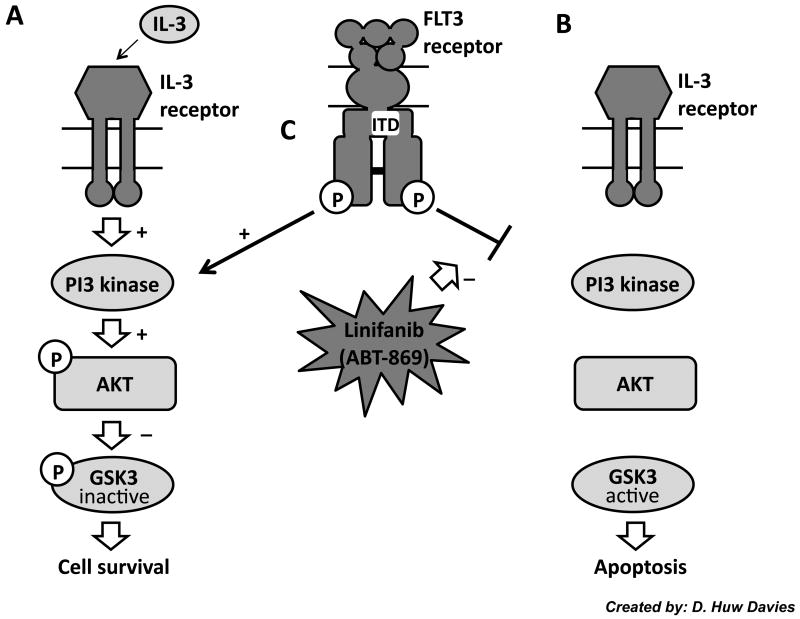Figure 6. Proposed Model.
It is proposed that one pathway by which ABT-869 induces apoptosis and inhibits proliferation is through the PI3K/AKT pathway. This is the same pathway through which growth factor withdrawal induces apoptosis (24). Previous research has shown that growth factor dependent hematopoietic cells are able to survive by activating PI3K, phosphorylating AKT, and inhibitory phosphorylation of GSK3β, which prevents apoptosis (A). (24) Removal of IL-3, however, prevents this activation from occurring and therefore prevents AKT from phosphorylating GSK3β and allows apoptosis to occur (B). (24) We hypothesize that Linifanib inhibits FLT3 (C), reduces AKT and GSK3β phosphorylation, and induces apoptosis in a manner mimicking IL-3 withdrawal induced apoptosis (B).

